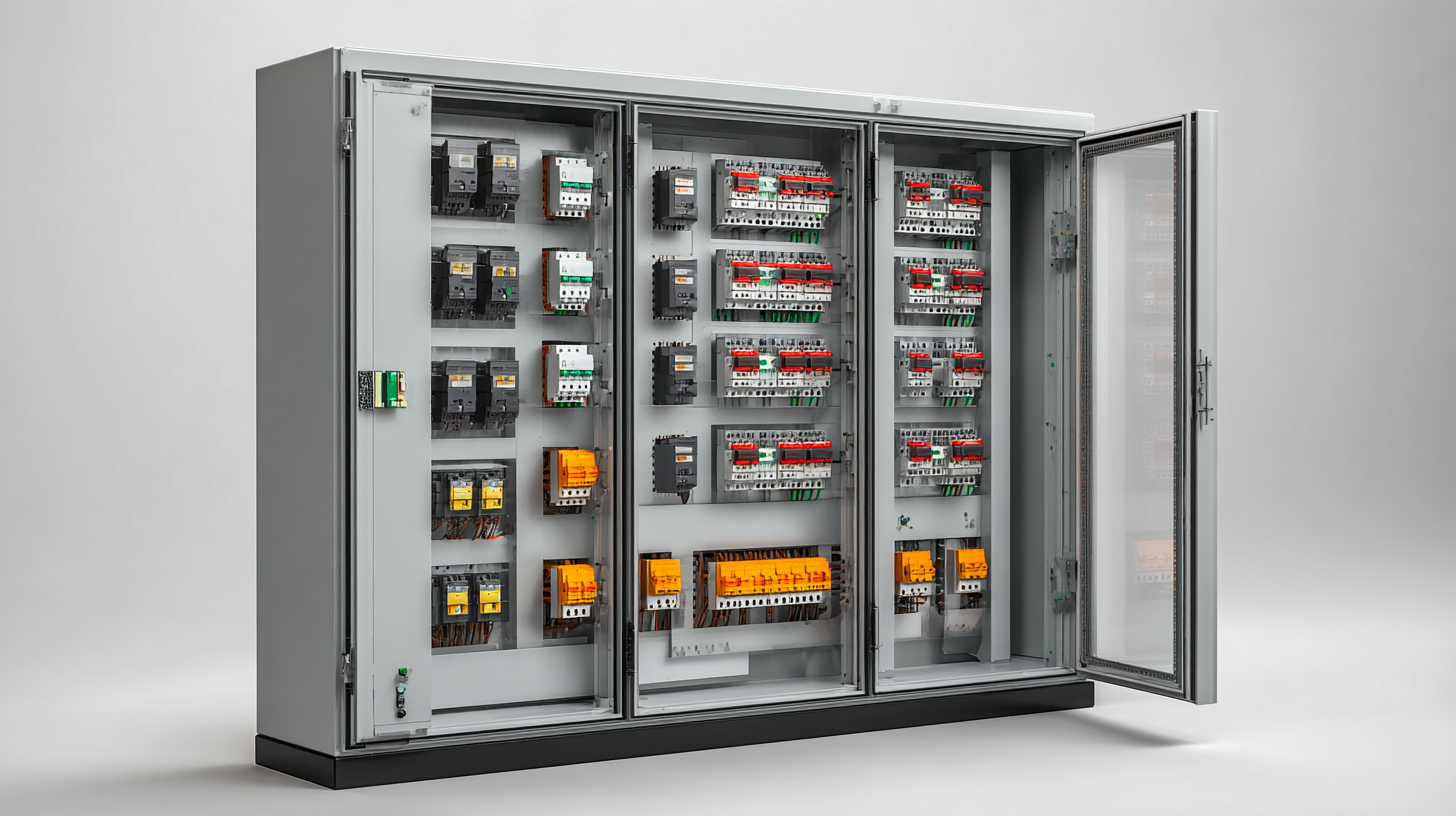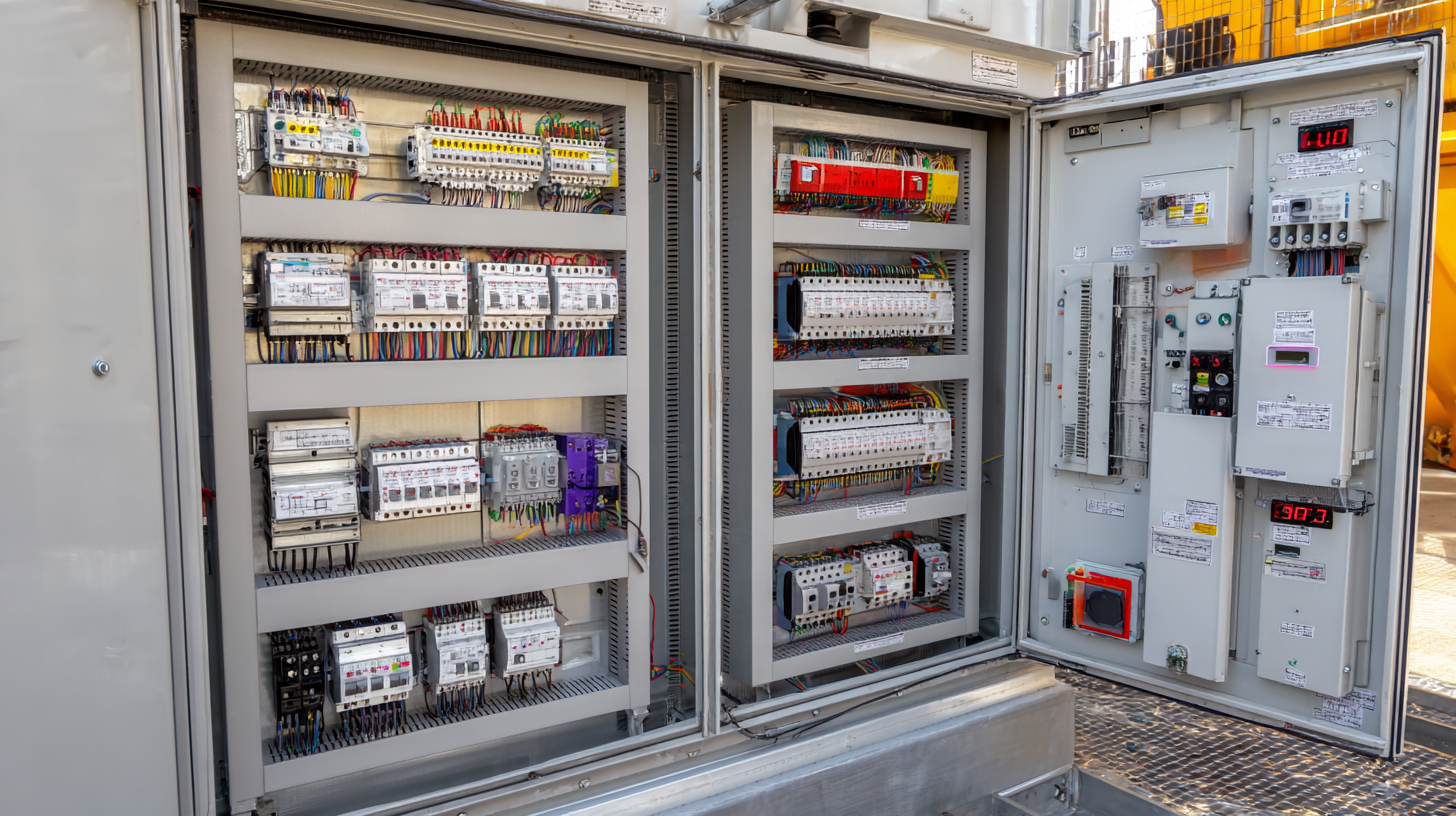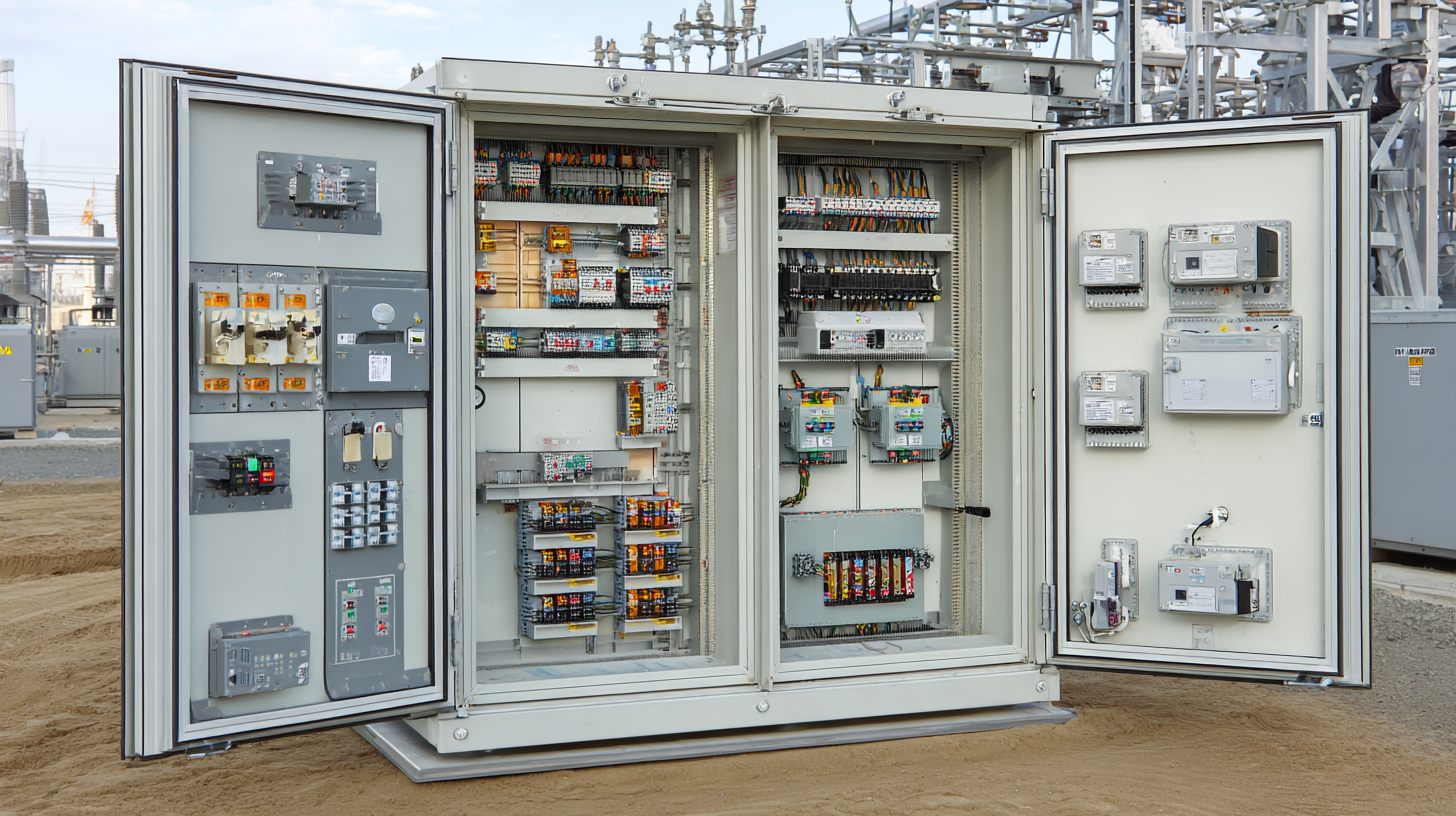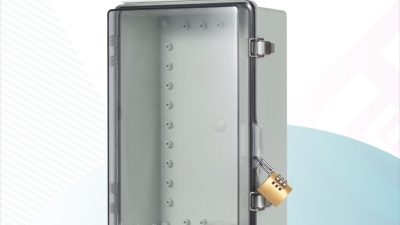Ultimate Checklist for Choosing the Right Breaker Enclosure for Your Needs
Table of Contents
- Key Factors to Consider When Selecting a Breaker Enclosure
- Understanding Different Types of Breaker Enclosures
- Essential Materials for Durable Breaker Enclosures
- Safety Standards and Compliance for Breaker Enclosures
- Customization Options for Your Breaker Enclosure Needs
- Maintenance Tips for Long-Lasting Breaker Enclosures
- Maximizing Safety and Durability: A Complete Guide to the 400x300x170 Plastic Electrical Enclosure
- FAQS
- Related Posts
When you're working on making sure your electrical systems are safe and running smoothly, picking the right breaker enclosure really matters. At Zhejiang Cejia Electric Co., Ltd., we totally get how tricky this choice can be. With over 20 years in the energy storage and power supply game, CEJIA is all about offering customized solutions that fit our clients’ unique needs. We pride ourselves on good quality products and competitive prices, which has helped us build a pretty solid reputation in the global electric market. In this handy checklist, we’re going to walk you through the key things to think about when selecting a breaker enclosure—so you can feel confident it’ll not only protect your gear but also keep everything running at peak performance and stay in line with safety standards.

Key Factors to Consider When Selecting a Breaker Enclosure
When you're trying to pick out the right breaker enclosure, there are actually a few important things you should keep in mind to make sure everything runs smoothly and safely.
First off, think about the environment where you're gonna install it. If it’s gonna be outside or in a really humid spot, you definitely want something that’s weather-resistant—no one wants their equipment to get wrecked by the elements, right? Also, it’s worth knowing the temperature range the equipment will be working in so you can avoid any weird malfunctions later on.
Another thing to consider is the size and shape of the enclosure. It needs to fit all the parts comfortably, with enough room for wires and easy access when needed, but not so big that it feels awkward or wastes space.
Speaking of access, think about how secure you want it—lockable doors or panels are a good idea if it’s in a public or shared area. And of course, double-check that the enclosure meets industry standards—that way, you know it’s up to code and safe to use.
If you take the time to think about all these things, you'll end up with a choice that really fits your specific needs—no stress, just a good solid decision.
Understanding Different Types of Breaker Enclosures
So, when you're choosing a breaker enclosure, it’s pretty important to get a good grip on the different types out there. Trust me, knowing the options really helps you keep everything safe and working smoothly. These enclosures come in all sorts of designs, each suited to specific environments and needs. For example, indoor enclosures are usually made from materials that stand up to dust and moisture—kind of like a shield for your electrical stuff. On the flip side, outdoor enclosures have to handle the weather and all that nature throws at them. Usually, they’re built from sturdy stuff like fiberglass or polycarbonate—things that won’t rust or get damaged easily when exposed to rain, sun, or whatever else.
Another thing you’ll want to think about is size and layout. Some setups need small enclosures that fit into tight spots, while others might call for bigger ones with plenty of room for multiple breakers and wires. Plus, some enclosures come with extras like cooling vents or lockable doors, which can really boost safety and performance. Basically, the more you understand these different styles and features, the easier it is to pick something that actually works for your needs and keeps everything safe and compliant. It’s all about making an informed choice, really.

Essential Materials for Durable Breaker Enclosures
When you're choosing the right breaker enclosure, the materials you pick are actually pretty crucial for making sure it lasts and does its job well. It turns out that enclosures made from high-density polyethylene (HDPE) and polycarbonate are really gaining popularity lately. People love them because they resist impacts better and stand up well to weather — pretty important stuff, right? I read in a report from Market Research Future that worldwide, the demand for tough, reliable enclosures is expected to grow by about 6.4% each year between 2021 and 2028. That’s mainly because of all the new improvements in material tech happening these days.
Another thing to keep in mind is how well the enclosure handles heat. Materials like aluminum, which conduct heat better, can help spread out that heat and keep everything cool. This is super important because if things get too hot, electrical parts don’t last as long, and that can be a real headache. A recent study from the Electric Power Research Institute even found that poor thermal management can boost failure rates by up to 30%. So, taking a close look at what materials you’re using is key to making sure your enclosures keep your equipment safe and working smoothly, no matter what kind of weather they’re up against.
Safety Standards and Compliance for Breaker Enclosures
When you're picking out a breaker enclosure, making sure it ticks all the safety boxes is really important. Basically, these enclosures need to follow certain industry standards so you're guaranteed safety and reliability. For example, depending on where you're located or what you're using it for, you'll want to look for certifications like IEC, UL, or NEMA. These aren’t just fancy labels—they show that the manufacturer really cares about quality and safety.
Tip 1: Don't forget to double-check the safety certifications of the enclosure you're eyeing. It’s a simple step, but it makes a big difference — ensures everything's been tested and meets the safety standards for your specific setup.
Tip 2: Also, take a good look at what the enclosure is made of and how it’s designed. A decent breaker enclosure should protect against things like dust, water, or even extreme temps. That way, your electrical stuff stays safe and lasts longer.
Here at Zhejiang Cejia Electric Co., Ltd., we've been in the game for over 20 years, and we really focus on giving you top-quality energy storage power solutions that are safe and up to standard. Our products aren’t just competitively priced—they’re built to meet international standards, so you can have peace of mind knowing you’re making a solid investment.
Breaker Enclosure Safety Standards Compliance
Customization Options for Your Breaker Enclosure Needs
When you're choosing a breaker enclosure, it's worth thinking about the customization options because they can really boost how well it works for you. Depending on what you need, you can pick from different materials, sizes, and finishes. For example, if your enclosure's going outdoors, it’s a smart move to go for something that'll resist weather and UV rays—that way, it’ll last longer. Also, make sure to pick a size that fits all your breakers comfortably but still leaves enough room for good airflow.
Another thing to keep in mind is the internal layout of the enclosure. Look for options that let you reconfigure the inside—those adjustable setups mean if you upgrade your electrical system later on, your enclosure can adapt without a hassle. It’s all about that flexibility.
And don’t forget about access points. Customizing doors and locks can really make a difference—giving you easy access when you need it, but still keeping everything secure. Picking the right combination here can make maintenance smoother and help you stay compliant with safety rules, without making things inconvenient. All these little tweaks can add up to a more efficient, reliable electrical setup overall.
Maintenance Tips for Long-Lasting Breaker Enclosures
When it comes to taking care of breaker enclosures, doing regular maintenance is super important if you want them to last longer and work efficiently. I mean, according to the folks over at the National Electrical Manufacturers Association (NEMA), staying on top of maintenance can actually boost the lifespan of your electrical gear by 25% or even more. So, dedicating a bit of time to routine check-ups really pays off in the long run by cutting down on costly replacements. Some key tips? Make sure to look out for rust and corrosion, double-check that the seals are still tight so moisture doesn't get in, and give the enclosure a good clean now and then to get rid of dust and grime that can mess with how it functions.

Plus, don’t forget about the environment. Things like extreme heat or humidity can really speed up wear and tear on these enclosures. The International Electrotechnical Commission (IEC) actually did a study and found that harsh conditions can make the materials wear out pretty fast. So, using weather-resistant enclosures in tough settings can make a huge difference. Setting up a maintenance routine—say, a quick inspection every three months and fixing things as needed—doesn’t just keep everything running smoothly but also helps you stay compliant with safety standards. In the end, it’s all about protecting your equipment and keeping folks safe over the long haul.
Maximizing Safety and Durability: A Complete Guide to the 400x300x170 Plastic Electrical Enclosure
When it comes to ensuring the safety and durability of electrical installations, selecting the right enclosure is essential. The 400x300x170 plastic electrical enclosure stands out as a premier choice, particularly due to its impressive features. This enclosure is waterproof, dustproof, and showcases excellent impact and corrosion resistance, making it ideal for various environments—from industrial settings to residential applications.
Customization is a key aspect of the 400x300x170 enclosure, allowing users to tailor it to their specific needs. Whether it’s a specific box opening, accessory assembly, or preferred color (available in transparent, gray, and white), these options enhance both functionality and aesthetics. Additionally, the wall-mounted design, along with built-in installation accessories, simplifies the setup process, allowing for quick and hassle-free installation. By maximizing safety and durability through thoughtful design and high-quality materials, this enclosure proves to be a reliable choice for any electrical application.
FAQS
: You should consider environmental conditions, size and configuration, access requirements, and compliance with industry standards to ensure optimal performance and safety.
A high rating for weather resistance is essential for enclosures that will be placed outdoors or in humid areas to prevent potential malfunctions and ensure longevity.
Indoor enclosures are typically made from dust and moisture-resistant materials, while outdoor enclosures often use robust materials like fiberglass or polycarbonate to withstand environmental elements.
Always verify the safety certifications, such as IEC, UL, and NEMA, for the breaker enclosure to ensure it adheres to the necessary safety regulations for your specific application.
Consider features such as cooling vents, locking mechanisms, and adequate space for wiring and installation, which enhance safety and performance.
The size and configuration determine whether the enclosure can fit necessary components, allow for wiring, and maintain proper airflow, which is crucial for functionality.
Understanding environmental factors like temperature range and exposure to moisture or dust is critical, as these conditions can affect the performance and durability of the enclosure.
Compliance signifies that the enclosure has undergone testing for quality and safety, providing assurance that it will function reliably in your specific environment.
A properly selected enclosure can enhance safety, protect components from environmental hazards, and ultimately lead to improved reliability and lifespan of the electrical system.
Look for manufacturers with significant industry experience, like Zhejiang Cejia Electric Co., Ltd., which offers energy storage solutions that prioritize safety, compliance, and competitive pricing.
Related Posts
-

How to Choose the Right DC Breaker for Your Solar Energy System Efficiency
-

Innovative Examples of Best Inverter Dc To Dc Solutions for Modern Applications
-

Future Innovations in MCB and MCCB Technologies for 2025 A Comprehensive Guide
-

The Ultimate Guide to Choosing the Best Circuit Breaker Enclosures for Your Global Projects
-

Upgrade Your Adventure with Top Quality Chinese Camping Inverters Now Popular Worldwide
-

China's Resilient Growth Amidst US China Tariffs Spotlighting Best Miniature Breakers


